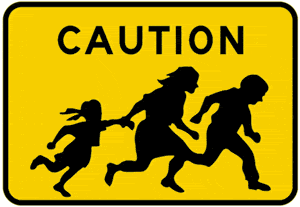Immigration Multipliers: Trends in Chain Migration
Jessica Vaughan, Center for Immigration Studies, September 27, 2017

Every year, about one million new legal immigrants, or lawful permanent residents, are admitted to the United States. More than 10.6 million immigrants were admitted from 2007 through 2016. According to DHS statistics, in recent years about half of these immigrants have been what are sometimes called “initiating immigrants”, or the first in their family to settle permanently in the United States, perhaps after attending college, finding employment, as refugees from persecution, or receiving amnesty after illegal settlement. The other half are not path-breakers, but are joining family members who arrived earlier, in the phenomenon known as chain migration.
This report examines the scale of chain migration and recent trends of family sponsorship over time and across different groups of immigrants.
{snip}
Key Findings:
- Over the last 35 years, chain migration has greatly exceeded new immigration. Out of 33 million immigrants admitted to the United States from 1981 to 2016, about 20 million were chain migration immigrants (61 percent).
- Judging from preliminary administrative data, approximately 1,125,000 legal immigrants were approved for admission in 2016, which is about 7 percent higher than 2015, and one of the highest numbers in the last decade.
- The largest categories of chain migration are spouses and parents of naturalized U.S. citizens because admissions in these categories are unlimited by law.
- According to the most complete contemporary academic studies on chain migration, in recent years each new immigrant sponsored an average of 3.45 additional immigrants. In the early 1980s, the chain migration multiplier was 2.59, or more than 30 percent lower.
- Of the top immigrant-sending countries, Mexico has the highest rate of chain migration. In the most recent five-year cohort of immigrants studied (1996-2000), each new Mexican immigrant sponsored 6.38 additional legal immigrants.
- Chain migration is contributing to the aging of the immigration stream. In the early 1980s, only about 17 percent of family migrants were age 50 or over. In recent years, about 21 percent of family migrants were age 50 or older — a rate that is more than 24 percent higher. This trend has implications for the fiscal consequences of immigration.
- Enacting an amnesty for roughly 700,000 DACA beneficiaries is likely to add double that number in additional immigrants because of chain migration, as the amnesty beneficiaries sponsor their parents and other family members.
- Congress could mitigate the chain migration impact of a DACA amnesty by eliminating and/or scaling back the three main categories of chain migration (parents, adult sons and daughters, and siblings of citizens). If the controversial visa lottery program also were eliminated, legal immigration would be reduced by 20 percent.
{snip}















